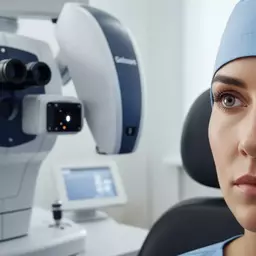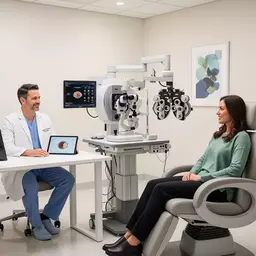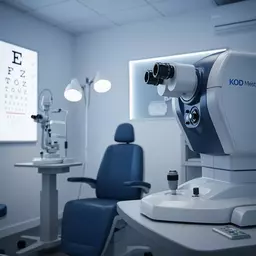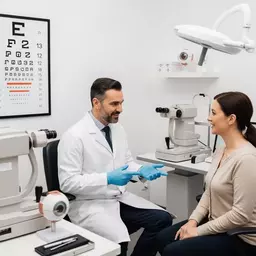Preparing for Laser Eye Surgery

Considering laser eye surgery? You're not alone in your quest for clearer vision! Many potential patients often find themselves overwhelmed by the choices available. Which procedure best suits your needs? Understanding the different types of laser eye surgery can empower you to make informed decisions about your vision correction journey.
What You Will Learn
- LASIK is a quick, popular procedure that reshapes the cornea for immediate vision improvement.
- PRK is ideal for those with thin corneas, focusing on surface-level correction with a slightly longer recovery time.
- SMILE offers a bladeless, less invasive alternative to LASIK, potentially reducing the risk of dry eyes.
- LASEK combines elements of LASIK and PRK, preserving the epithelium for a gentler approach to corneal reshaping.
- Understanding your corneal thickness is crucial in determining the most suitable surgical option for you.
- Each procedure effectively addresses common vision problems like myopia, hyperopia, and astigmatism.
- Weighing the potential risks and benefits can help you make a confident decision about your eye health.
- Long-term advantages of laser eye surgery include improved vision, increased independence, and cost savings on corrective eyewear.
Comparing Laser Eye Surgery Procedures
This visual offers a side-by-side comparison of four common laser eye surgery types: LASIK, PRK, SMILE, and LASEK, highlighting their key characteristics and ideal candidates. For a more comprehensive overview of these procedures, consider reading our detailed guide on laser eye surgery types explained.
LASIK: Flap-Based Precision
- Method: Creates corneal flap, reshapes underlying tissue.
- Recovery: Typically quick.
- Ideal For: General population with sufficient corneal thickness.
PRK: Surface-Level Correction
- Method: Removes outer corneal layer, reshapes surface.
- Recovery: Slightly longer (epithelium regenerates).
- Ideal For: Thinner corneas, active lifestyles.
SMILE: Bladeless & Minimally Invasive
- Method: Small incision, lenticule extraction with femtosecond laser.
- Recovery: Reduced dry eye risk, faster.
- Ideal For: Dry eye concerns, myopia.
LASEK: Hybrid Corneal Approach
- Method: Epithelium preserved, gentle reshaping.
- Recovery: Moderate, epithelium heals.
- Ideal For: Corneas not suitable for LASIK (thickness concerns).
Understanding the Types of Laser Eye Surgery for Vision Correction
When it comes to laser eye surgery, knowing your options is crucial for making informed decisions. At VisionCost Insights, I aim to provide clarity on the various procedures available, helping you navigate your vision correction journey with confidence. Let's explore some of the most common types of laser eye surgery: LASIK, PRK, SMILE, and LASEK.
An Overview of LASIK, PRK, SMILE, and LASEK
Each of these surgical options has unique characteristics and benefits. Here’s a quick overview:
- LASIK: A popular choice that uses a laser to reshape the cornea.
- PRK: Focuses on the surface of the eye, ideal for those with thin corneas.
- SMILE: A bladeless procedure that utilizes a femtosecond laser.
- LASEK: A hybrid technique combining elements of LASIK and PRK.
Understanding these options helps you weigh the pros and cons based on your specific eye condition and lifestyle. Each procedure has different factors influencing its effectiveness, which we will dive deeper into. To better understand the financial commitment, you might want to review understanding laser eye surgery costs.
What is LASIK Surgery and How Does It Work?
LASIK surgery has gained popularity for its quick recovery and precision. During the procedure, a laser reshapes the cornea to improve how light is focused on the retina. This technique typically requires only a few minutes per eye, and many patients experience improved vision almost immediately!
The process starts with creating a thin flap on the cornea, followed by reshaping the underlying tissue with a laser. If you're considering LASIK, it’s vital to discuss your individual eye health and expectations with your ophthalmologist.
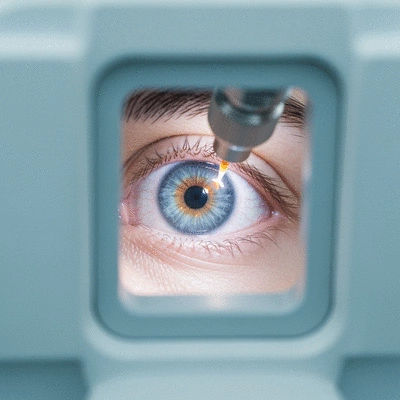
Exploring PRK: The Surface-Level Approach
PRK is a great alternative to LASIK, especially for individuals with thinner corneas. This surgery removes the outer layer of the cornea, allowing the underlying tissue to be reshaped. The corneal epithelium regenerates over time, which can lead to a slightly longer recovery period but excellent long-term results.
Patients who opt for PRK often appreciate the lack of a flap being created, which can eliminate certain complications associated with LASIK. If you are considering this option, I recommend discussing it in detail during your consultation!
SMILE Surgery Explained: A Bladeless Method
SMILE (Small Incision Lenticule Extraction) is a newer, bladeless technique that is less invasive than LASIK. It involves creating a small incision in the cornea using a femtosecond laser, through which a lenticule is extracted. This method may offer a reduced risk of dry eyes and faster recovery compared to traditional LASIK.
For many, SMILE presents an attractive option due to its minimally invasive nature. If you're curious about this method, let’s explore it together during your pre-op discussions!
Comparative Insights on LASEK and Other Techniques
LASEK (Laser Epithelial Keratomileusis) combines elements of both LASIK and PRK. In this procedure, the epithelium is preserved, which allows for a more gentle approach to corneal reshaping. This technique can be particularly beneficial for those whose corneas may not be suitable for LASIK due to thickness concerns.
Each of these surgical options—LASIK, PRK, SMILE, and LASEK—has distinct advantages that cater to various eye conditions and patient preferences. It’s essential to have an honest conversation with your ophthalmologist to determine the best fit for your needs.
How Refractive Surgery Addresses Common Eye Conditions
Refractive surgery primarily aims to correct common vision problems such as myopia (nearsightedness), hyperopia (farsightedness), and astigmatism. Understanding these conditions is the first step in choosing the right procedure.
Understanding Myopia, Hyperopia, and Astigmatism
Myopia occurs when the eyeball is too long, causing distant objects to appear blurry. Hyperopia, on the other hand, happens when the eyeball is too short, leading to difficulty focusing on nearby objects. Astigmatism results from an irregularly shaped cornea, causing overall blurry vision.
Each of these conditions can be effectively treated with the appropriate laser eye surgery. My goal is to help you understand how each procedure can address your specific vision challenges!
The Role of Corneal Thickness in Surgery Outcomes
Corneal thickness plays a critical role in determining which type of laser eye surgery is right for you. A thicker cornea is generally ideal for LASIK, while thinner corneas may benefit more from PRK or LASEK. Understanding your corneal thickness will guide our discussions on what options are best suited for your vision correction goals. For more details on preparing for your procedure, check out our article on preparing for laser eye surgery.
With this knowledge, you can approach your surgery with confidence, knowing you are making informed choices about your eye health!
We Want to Hear From You!
What factors are most important to you when considering laser eye surgery? Share your thoughts below:
Evaluating the Risks and Benefits of Laser Eye Surgery
When considering laser eye surgery, it’s essential to weigh both the risks and the benefits. Each procedure comes with its unique set of potential complications, but understanding these risks can empower you to make an informed decision about your vision correction journey. At VisionCost Insights, we want you to feel confident as you embark on this transformative experience!
Let’s delve into some of the potential risks involved with laser eye procedures. While many patients enjoy successful outcomes, others may experience issues that vary from mild to more serious complications. Are you ready to learn more? Let's break it down!
Potential Risks Involved with Laser Eye Procedures
Like any surgical procedure, laser eye surgery isn’t without risks. Here are some of the most common concerns:
- Dry Eyes: Post-surgery, some individuals might experience dryness or irritation in their eyes, which can be temporary or, in rare cases, long-lasting.
- Visual Disturbances: Patients may notice halos, glare, or double vision, particularly at night. These effects can diminish over time.
- Overcorrection or Undercorrection: Achieving the exact vision correction desired may not always occur, leading to the need for additional treatments.
- Infection: Though rare, there’s a slight chance of developing an infection after surgery, which could impact healing.
Understanding these risks is crucial, but it’s equally important to remember that many patients have positive outcomes and enjoy improved vision! Don’t hesitate to discuss any concerns during your consultation with me—I’m here to help.
Long-Term Benefits of Vision Correction Surgery
Now that we’ve covered the risks, let’s talk about the many long-term benefits associated with laser eye surgery. Many patients find that the advantages far outweigh their concerns! Here are some key benefits:
- Increased Independence: Many individuals no longer rely on glasses or contact lenses for their daily activities, enhancing their overall quality of life.
- Improved Vision: Laser eye surgery can significantly enhance visual acuity, making activities like driving and reading much more enjoyable.
- Cost Savings Over Time: Although there is an upfront cost, many patients save money in the long run by not needing corrective eyewear.
- Quick Recovery: Most patients experience a rapid recovery, allowing them to return to their regular activities shortly after the procedure.
These benefits can greatly contribute to a patient’s sense of well-being and satisfaction with their vision correction journey. At VisionCost Insights, we believe that informed patients make the best choices for their eye health!

Understanding the Role of Custom Wavefront Technology
One of the exciting advancements in laser eye surgery is the use of custom wavefront technology. This sophisticated approach provides a detailed map of your eye, allowing for highly personalized treatment. By tailoring the procedure to your unique vision profile, we can achieve remarkable results! Patients who opt for wavefront-guided LASIK often report better outcomes and fewer visual disturbances.
Long-Term Effects and Surgical Outcomes: What to Expect
After undergoing laser eye surgery, it’s common for patients to experience a significant improvement in their vision. Many studies show that the majority of patients achieve 20/25 vision or better, which is suitable for most daily activities. However, it’s essential to have realistic expectations and understand that some individuals may still require corrective eyewear for specific tasks, such as reading or night driving.
Discussing your goals and expectations with me will ensure you’re well-informed about your potential outcomes. Remember, your unique vision needs and lifestyle play a crucial role in the final results!
Recap of Key Points
Here is a quick recap of the important points discussed in the article:
- Types of Laser Eye Surgery: The main options are LASIK, PRK, SMILE, and LASEK, each with unique benefits.
- Understanding Conditions: Refractive surgery addresses myopia, hyperopia, and astigmatism effectively.
- Corneal Thickness: It's crucial to assess corneal thickness when choosing a suitable procedure.
- Risks vs. Benefits: Weighing the risks, such as dry eyes and infection, against benefits like improved vision and independence is vital.
- Custom Wavefront Technology: This technology allows for personalized treatment, enhancing surgical outcomes.
- Consultation Importance: Discussing options and expectations with your ophthalmologist is essential for informed decision-making.
Frequently Asked Questions About Laser Eye Surgery
- What are the main types of laser eye surgery?
- The main types discussed are LASIK, PRK, SMILE, and LASEK, each differing in their approach to reshaping the cornea and recovery times.
- How does LASIK surgery work?
- LASIK involves creating a thin flap on the cornea, reshaping the underlying tissue with a laser, and then repositioning the flap. It's known for quick recovery.
- Who is an ideal candidate for PRK?
- PRK is often ideal for individuals with thinner corneas or active lifestyles, as it does not involve creating a corneal flap, reducing certain complications.
- What makes SMILE surgery different?
- SMILE is a bladeless and minimally invasive technique that uses a femtosecond laser to create a small incision and extract a lenticule from the cornea. It may reduce the risk of dry eyes.
- What eye conditions can laser eye surgery correct?
- Laser eye surgery primarily corrects myopia (nearsightedness), hyperopia (farsightedness), and astigmatism (irregularly shaped cornea).
- Why is corneal thickness important?
- Corneal thickness is crucial because it helps determine which surgical procedure is safest and most effective for you. Thicker corneas are generally better suited for LASIK, while thinner corneas might lead to PRK or LASEK being recommended.
- What are the potential risks of laser eye surgery?
- Potential risks include dry eyes, visual disturbances like halos or glare, overcorrection or undercorrection, and, rarely, infection.
- What are the long-term benefits of laser eye surgery?
- Long-term benefits include increased independence from glasses or contacts, improved vision, potential cost savings over time, and a generally quick recovery.


